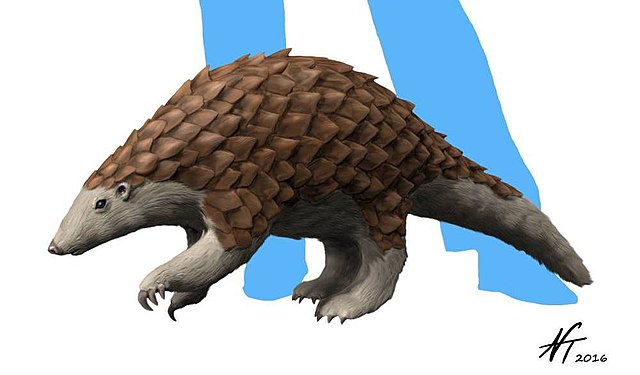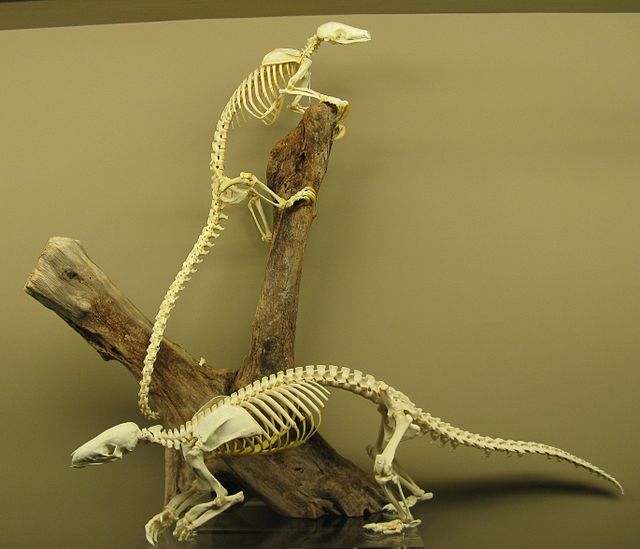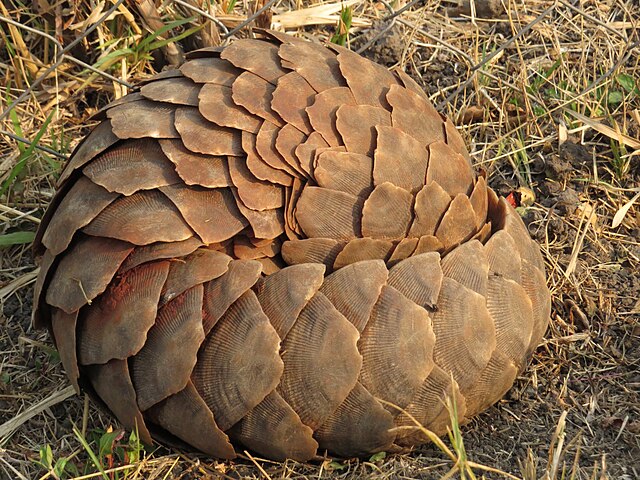Eomanis is the earliest known true pangolin from extinct family Eomanidae within suborder Eupholidota. It lived during the Eocene in Europe. Eomanis fossils found in the Messel Pit in Germany are very similar in size and anatomy to living pangolins of the genus Manis, indicating that pangolins have remained largely unchanged in morphology and behavior for 50 million years. However, unlike modern pangolins, its tail and legs did not bear scales. According to the stomach contents of the excellently preserved Messel specimens, Eomanis’ diet consisted of both insects and plants.
Image: Eomanis waldi
Image: Eomanis NT
Pangolins, sometimes known as scaly anteaters, are mammals of the order Pholidota. The one extant family, the Manidae, has three genera: Manis, Phataginus, and Smutsia. Manis comprises four species found in Asia, while Phataginus and Smutsia include two species each, all found in sub-Saharan Africa. These species range in size from 30 to 100 cm. A number of extinct pangolin species are also known. In September 2023, nine species were reported.
Pangolin
Pangolin skeletons at the Museum of Osteology (2009)
Schematic drawing of pangolin scale histology
Ground pangolin in defensive posture






